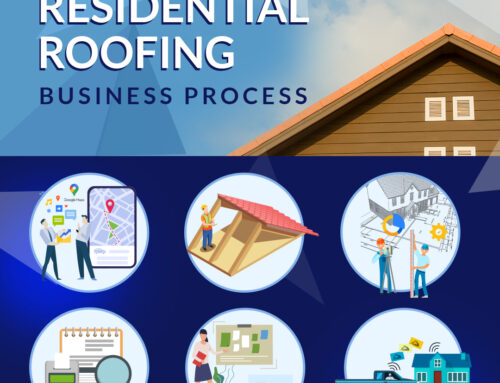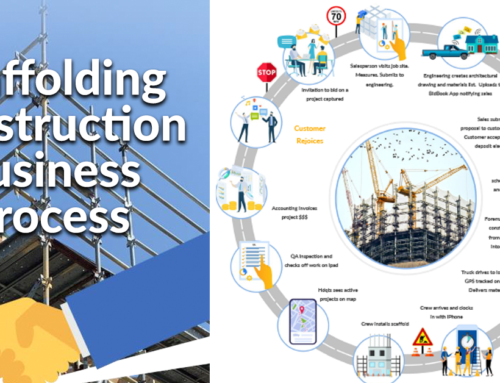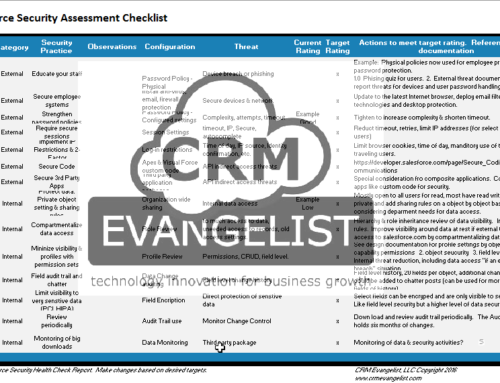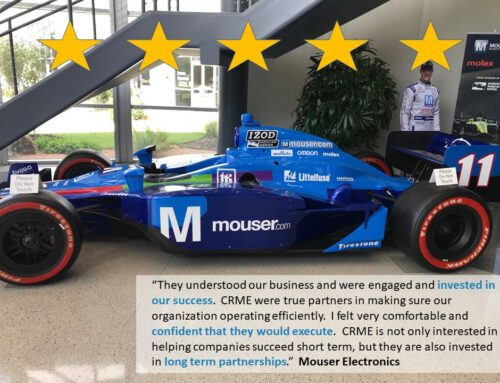Most manufacturing/distribution businesses need to forecast future demands for their products. At an operational level, these forecasts are used to:
- Maintain inventories of finished products
- Plan for replenishment of raw materials and other items
- Plan for production and capacity (so that you have more to sell!)
Unfortunately many companies struggle to develop accurate forecasts. This issue often creates friction between the sales/marketing group and the planning/manufacturing group in many companies. Material and supply chain managers want to reduce DSI (inventory turns) and sales wants enough product on hand to sell. You can’t sell what you don’t have.
Although we can’t promise a magic cure, we can list a few often forgotten principles to incorporate into your forecasting methods and perspectives on where and how CRM technology can play a role.
1. FORECASTS ARE ALWAYS WRONG
The truth remains – no one can forecast with 100% accuracy. The trick is to establish your targets for forecast accuracy for the various products/product groups you need to forecast and work to achieve those targets.
2. FORECAST ACCURACY MUST BE MEASURED
Many companies do not measure accuracy of their forecasts. You know the very simple rule – nothing gets improved until you start measuring it. An objective measurement of forecast accuracy should be established to help improve forecast accuracy and also to plan for some contingency (may be safety stock) against the potential forecast error.
3. USE AGGREGATE FORECASTS WHERE YOU CAN
Aggregate forecasts are likely to be more accurate than detailed forecasts (i.e., forecast of total number of screws that will be sold is likely to be more accurate than the forecast of how many 12, 100, 500 packs of screws will be sold). Hence, examine how forecasts are really used and, where you can, use aggregate forecasts instead of detailed forecasts. Also, as with many manufacturers, observe the Pareto principle or the 80 – 20 rule in your forecasting. Focus on the vital few of what product mixes make the most money or create the largest quantity of orders.
4. THE FURTHER OUT YOU FORECAST, THE LESS ACCURATE THE FORECAST WILL BE
However, as a minimum, you need to forecast demands for any product to cover its cumulative lead time. If you import raw materials, the cumulative lead time can easily add up to 3 to 6 months. However, have you ever considered ways of reducing your lead times? Reducing lead times will help you reduce the horizon over which you rely heavily on highly accurate forecasts resulting in more accurate plans.
5. ESTABLISH DIFFERENT DEMAND STREAMS
Depending upon situations, you may want to break your target markets into streams (e.g., major retailers, small shops, direct sales, etc) and forecast for each stream/customer group separately. Also, you need to break your demand data into base sales and promotional sales. As a general rule, one should forecast base business and plan for promotional activities.
6. IDENTIFY FORECASTING UNITS / LEVELS REQUIRED
Marketing considers market segments they plan, while sales consider categories they control. Both these functions prefer to plan in dollars, while production elects to plan in units. Ultimately for planning purposes, you need to develop a forecast by product in units. However, your forecasting system should be flexible enough so that it can aggregate forecasts/actual demands to different levels of details in alternate units and in dollars. Always store the information at the lowest level and provide for the needed flexibility.
7. COMPLIMENT YOUR FORECASTING WITH CRM AND BUSINESS INTELLIGENCE TECHNOLOGY
It is amazing to me that many companies will employ highly intelligent, highly paid professionals or even executives to spend their time gathering sales data for them to manipulate in spreadsheets to develop a forecast – a process that takes a few days or even weeks. More often than not, they spend 95% of this time gathering data and 5% of the time in evaluating results. ERP and Supply Chain technology is used pervasively throughout manufacturing and distribution already. However, investing in technology such as Customer Relationship Management (CRM) and/or Business Intelligence (BI) reporting and analytics can provide you with a more accurate perspective of true demand by getting as close to the customer as possible, something ERP and Supply Chain does not do. Don’t mix forecast adjustments from external influences to your forecast (sales) with your internal constraints (Supply Chain). All while freeing up valuable time for your key managers to do what they are paid to do. Not only that, you will see marked improvement in the results from your forecasting process.
8. MAKE FORECASTING A PROCESS
Too many managers think that a solution to their forecasting problem is to buy a forecasting package, load in history, and drop the calculated forecast into the Master Schedule. No matter how much you invest in your solution, the best any forecasting program can do is evaluate history and extrapolate the future.
This should be considered just a starting point. An effective forecasting process must include:
- Analysis of items with low forecast accuracy
- Review of forecasts generated by any forecasting package
- Adjustments for special factors such as promotion and price changes
- Input from people as close to the ultimate customer as possible
- Documenting underlying forecasting assumptions and
- An effective management review and communication step
9. DEVELOP A COMMON LEVEL OF UNDERSTANDING
Do not make assumptions that everyone understands how forecasts are generated and used. It is important for all people involved in the forecasting process to clearly understand the whole process, where they fit in it, and what their contribution does to the entire forecasting and planning process. This may require sound education and training, an area very often sadly and badly neglected.
10. SEEK A CONSULTANT TO PROVIDE BEST PRACTICES AND EXTERNAL VIEWPOINTS
If you follow these time proven principles, you will be able to implement a well-managed forecasting process and the resulting benefits will be very significant. Employing a consultant with external viewpoints of how others implement forecasting processes best practices. A good consultant can also expertly facilitate mutual cooperation, reach breakthroughs between departments, and help automate the process with technology. Good Luck!




